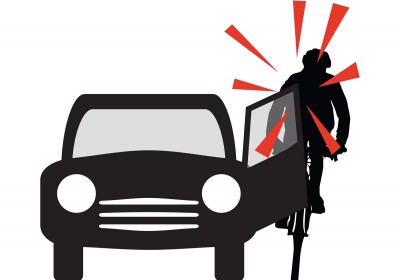Michelin Challenge Design 2007: How designers handle being 'doored' and other safety issues
Mon, 18 Dec 2006Ever been 'doored'? Even know what it is? You do if you're a bicycle, motorcycle or even skateboard rider who has been passing a parked car, truck or SUV at the precise moment one of the vehicle's doors is being opened directly in your path. At its worst, it can be fatal. At its best, it's merely painful. Somewhere in between, it can leave you and your bike or board permanently disabled.
In the greater scheme of some 44,000 traffic fatalities a year in the United States, being 'doored' may seem a minor issue. But it points to the depth and breadth of issues involved in sharing the road.
"We've seen a substantial, exponential increase in motorcycle deaths," Mary Peters, the new Secretary of Transportation, recently told her hometown newspaper, the Arizona Republic. Peters is particularly interested in motorcycle safety. She and her husband are riders who are taking two of their Harleys to Washington, D.C. with them as she begins her service on the President's Cabinet.
"Sharing the Road," is the theme for the 2007 Michelin Challenge Design, a year-long transportation design event that culminates at the North American International Auto Show (January 13-21, 2007) in Detroit. This year's entrants - over 260 of them from around the world - addressed cars and other light vehicles, semi trucks and passenger buses as well as road users on two wheels and two feet.
Bob Miron, Michelin's director of technical marketing, notes some of the design solutions selected by this year's eight-member jury - an expert panel of renowned designers, transportation industry educators and safety experts - addressed being 'doored.'
"The xV concept from Marin Myftiu of Albania features a locking system that prevents a door from being opened for a few seconds after the vehicle is turned off when an object approaches within the door's span," said Miron, "while the Concept WL created by Hyun Joon Park of South Korea has doors that rotate vertically rather than hinge outward." A third solution, proposed by Brazilian designer Rubem Ferreira for his microbus concept, Porcellio, included a proximity-warning device in a rearview mirror or at the corner of a bumper to alert occupants of a parked vehicle of the approach of a bicycle, motorcycle or even of a larger vehicle.
"Sharing the road is a very big deal for the motorcyclist," noted MCD juror Greg Brew, a former Fiat and BMW auto designer who since 2004 has been director of industrial design for Polaris Industries, maker of snowmobiles, all-terrain vehicles and Victory motorcycles. Brew noted that motorcycle and other two-wheel riders are more exposed to potential injury than those in an enclosed vehicle and as such have to take personal responsibility for their protective gear, rather than relying on airbags or other vehicle-based systems.
"You look at an ATV or a motorcycle and the technology is so visible," Brew added of a seemingly unique relationship between safety and design faced by those creating two-wheel vehicles. "Any technology that affects the bike is going to immediately affect the design," said Brew. "It's not hidden away under the hood."
Many vehicle and roadway safety issues were addressed by Michelin Challenge Design entrants including:
- Driver distraction and helping new drivers become aware of a constantly changing environment around their vehicles.
- Aging drivers and their diminishing capabilities.
- Real-time route guidance to smooth traffic flow and decrease congestion that wastes fuel and can cause even more collisions.
"The new driver is a particular issue in highway safety," said Michelin Challenge Design juror Dr. Anthony Stein, president and technical director of Safety Research Associates, Inc. in California. Stein has been studying the human factors in transportation safety for about 30 years - "from skateboarders to the Shuttle," as he describes it.
Statistics support Dr. Stein: Vehicle crashes are the leading cause of death among American teens. Each year an average of 6,000 teenage drivers die on American roads and more than 300,000 teenaged drivers or passengers are injured. One in five 16-year-old drivers will be in a collision in his or her first year on the road and driver error is to blame nearly 80 percent of the time.
"The first five years are really concerned with learning what to do," he explained, "when and where to look, when to pull out, learning the visual clues and learning to control the vehicle and predicting traffic behavior." In fact, he added, "driving presents a work load perspective that is almost beyond human capacity. There's an extremely high rate of optic flow and emerging data. Flying a fighter aircraft can be easier."
"The vehicle safety challenges facing the transportation industry are indeed vast," added Michelin's Miron. "Design and innovation are inextricably linked and Michelin Challenge Design provides a forum for designers around the globe to share ideas for making the chore of driving more manageable and safer for more people."
For the complete story, visit www.michelinchallengedesign.com
By

